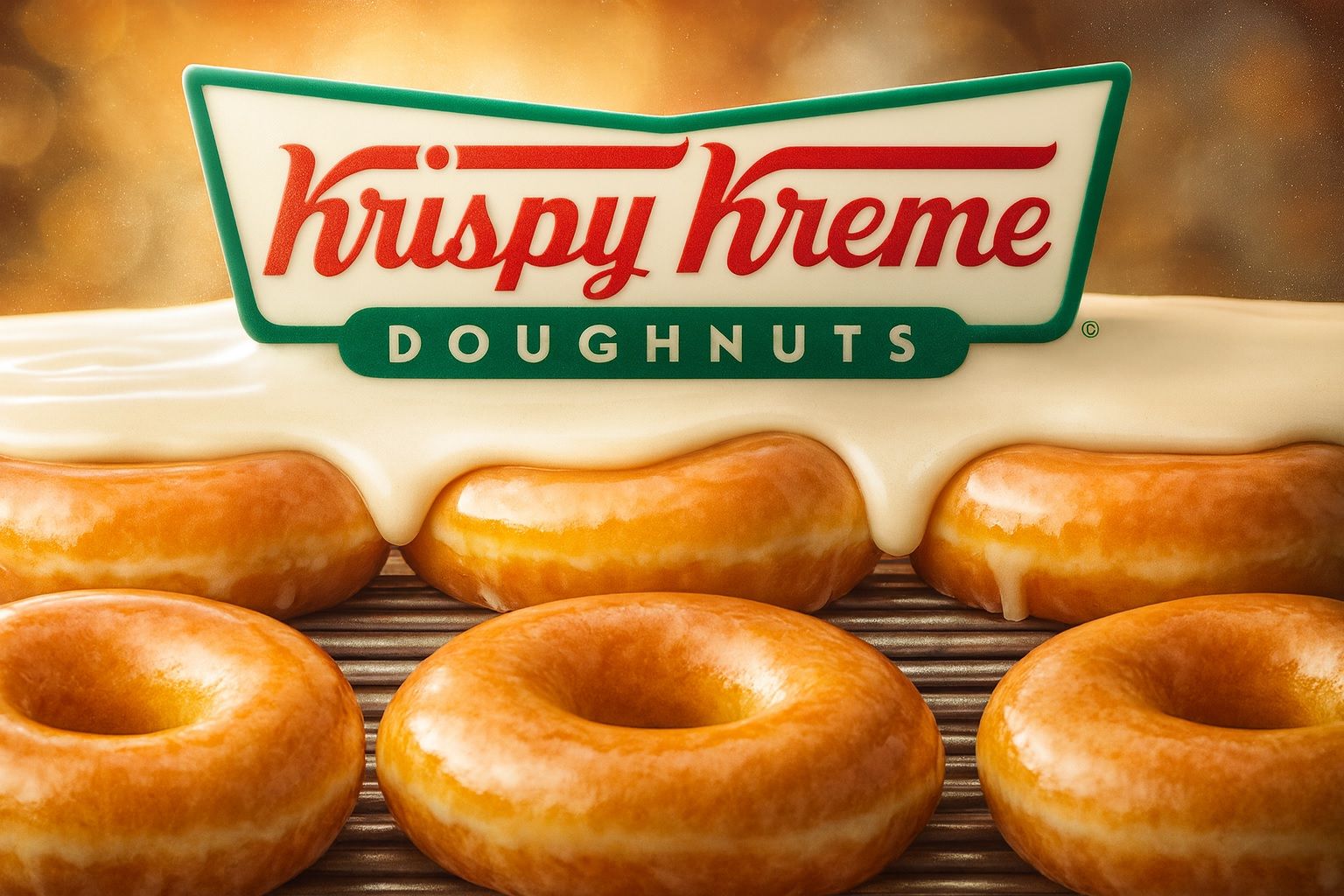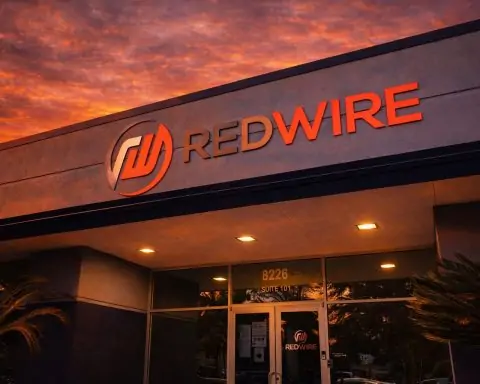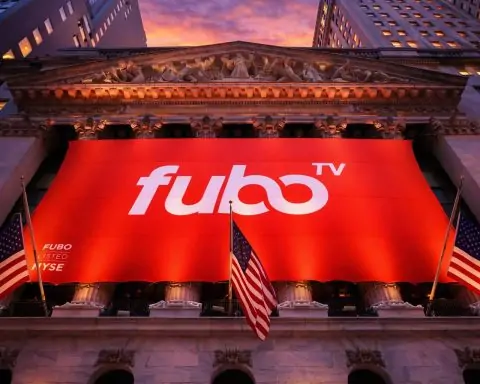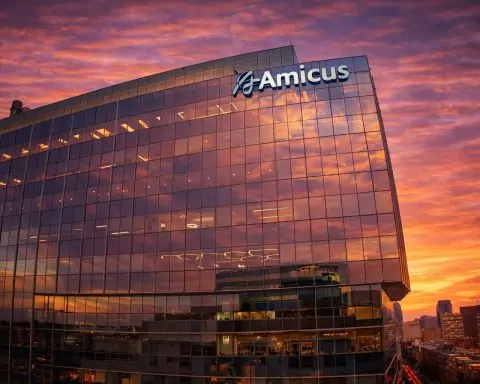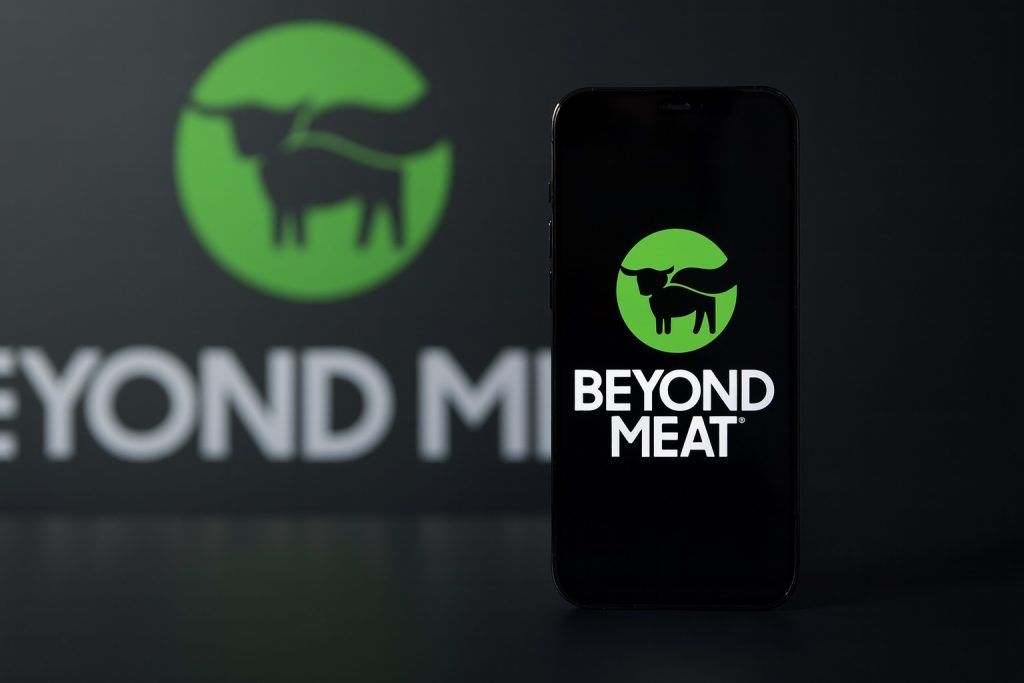- Share price: DNUT closed around $3.71 on Oct. 21, 2025 (up ~14% that day) [1]. The stock is down roughly 65% year-to-date [2].
- Q2 2025 results: Revenue $379.8M (–13.5% YoY) and a huge GAAP net loss of $441.1M (driven by ~$406.9M in impairment charges) [3]. Adjusted EBITDA fell to $20.1M (5.3% margin) [4].
- McDonald’s exit: Krispy Kreme and McDonald’s USA ended their doughnut partnership (effective July 2, 2025) after McDonald’s outlets proved unprofitable for Kreme [5] [6].
- Turnaround plan: Management rolled out a four-part turnaround strategy: refranchising international markets, cutting capital intensity, improving margins (outsourcing logistics), and focusing U.S. growth on high-volume profitable channels [7] [8]. CEO Josh Charlesworth said the plan targets “profitable U.S. expansion and capital-light international franchise growth” [9].
- Global expansion: Krispy Kreme opened its first Spain shop on Oct. 2, 2025 and plans two more in Madrid before year-end, eventually exceeding 50 stores in four years [10]. The chain is also opening new locations in São Paulo and, for the first time, in Uzbekistan by year-end [11] [12]. Charlesworth said these deals “strengthen our international presence” and leverage a franchise model for “sustainable, profitable growth” [13].
- Analyst outlook: Wall Street remains cautious. The consensus 12‑month price target is only about $6.45 (far above current ~$3.7) [14]. Recent analyst moves include Morgan Stanley cutting its target to $2.50 (overweight) and Zacks warning to sell [15]. Some experts note Krispy Kreme’s rapid run-up is driven by retail meme-stock momentum, which they warn could reverse sharply [16] [17].
Krispy Kreme’s share price has bounced sharply this week, rekindling a meme-stock–style frenzy even as the doughnut chain struggles domestically. After closing at about $3.26 on Oct. 20, the stock jumped roughly 14% on Oct. 21 to around $3.7 [18] [19]. Investors cited the recent news of Krispy Kreme’s aggressive overseas growth and renewed social-media hype, following a torrid year in which shares plunged from over $12 in late 2024 to current levels [20] [21]. (Memestock mania helped send DNUT up as much as 27% in a single day in July before it faded [22].)
This year’s slide reflects disappointing financials. In Q2 2025 (ended June 29), net revenue fell 13.5% to $379.8 million [23]. A massive GAAP loss of $441.1 million wiped out earnings (largely due to non‑cash goodwill and asset impairments of $406.9M) [24] [25]. CEO Charlesworth explained that the quarterly results were weighed down by “unsustainable operating costs relative to unit demand in the McDonald’s USA partnership” – a collaboration that company and McDonald’s agreed to terminate as of July 2, 2025 [26] [27]. Indeed, the U.S. segment saw a 21% revenue drop year-over-year (as Krispy Kreme exited roughly 2,400 McDonald’s locations) [28]. By contrast, international sales grew, up about 6% from last year on strength in Canada, Japan and Mexico [29].
In response to the pain points, management unveiled a comprehensive turnaround plan on Aug. 7, 2025 [30] [31]. The four-point strategy aims to deleverage the balance sheet and return to growth by: (1) Refranchising company-owned markets and restructuring joint ventures; (2) Improving Return on Invested Capital (leveraging existing assets and franchise partnerships); (3) Expanding Margins via cost cuts (e.g. outsourcing U.S. logistics); and (4) Driving Sustainable, Profitable U.S. Growth by focusing on high-volume, high-margin channels [32] [33]. “We expect to begin recouping profitability in the third quarter,” Charlesworth told investors [34]. The CEO also emphasized the two-pronged approach of U.S. and international growth: Krispy Kreme’s “current strategy hinges on U.S. expansion through high-volume retail points of distribution and capital-light international franchise growth,” he said in July [35].
Amid the restructuring, Krispy Kreme also refreshed its leadership. In July it announced Raphael Duvivier (formerly President, International) as its new CFO effective July 11 [36]. Charlesworth praised Duvivier’s “deep understanding of the company” to help drive “sustainable, profitable growth” [37]. Meanwhile, longtime growth executive David Skena left, and Alison Holder (former Product Officer) took on an expanded Brand role, reflecting a renewed focus on marketing and product innovation [38].
Global Growth Takes Center Stage. With U.S. sales soft, Krispy Kreme has shifted to international markets as its growth engine. The company opened its first Spanish shop in Madrid on Oct. 2, 2025, partnering with local franchisee Glaseados Originales [39]. Two more Madrid locations are slated by year-end, and over 50 total Spanish stores are planned in the next four years [40] [41]. Charlesworth said the Madrid launch “strengthens our international presence” and leverages a capital-light franchise model [42]. Similarly, the chain is rapidly expanding in Brazil (two new São Paulo outlets by 2025 via a joint venture) and preparing to debut in Uzbekistan (first shop in Tashkent in Oct. 2025) [43]. These moves follow earlier entries in new markets (Krispy Kreme now operates in over 40 countries) and are aimed at tapping emerging demand for its signature fresh doughnuts. The press release quotes Charlesworth saying: “From Spain to Brazil to Uzbekistan, we love seeing the excitement from fans around the world as they enjoy our fresh, delicious treats” [44].
Analysts and Outlook. Wall Street is divided on whether these growth plans can rescue the stock. The average price target among analysts is roughly $6.45 – implying upside from current levels – but that falls short of historic highs [45]. Morgan Stanley, for example, lowered its target to $2.50 (still at “overweight”) in July, while Zacks recently cut its rating to “strong sell” and JPMorgan stuck with underweight [46]. Most research houses rate DNUT around “hold” with a few on either side [47]. Analysts cite execution risks and a weak U.S. consumer, offset only partly by international gains [48] [49]. One academic commentator noted that Krispy Kreme’s trajectory will hinge on successfully franchising overseas and revitalizing domestic sales.
Meanwhile, market pundits caution that the recent stock pop is largely momentum-driven. The resurgence of retail interest (reminiscent of 2021’s meme-stock frenzy) came with warnings. As Daniela Sabin Hathorn of Capital.com put it: “These surges are often disconnected from company fundamentals and can reverse violently. Traders who chase momentum without an exit strategy may be caught in painful drawdowns” [50]. In other words, last week’s rally may be more about short squeezes and social media buzz than an immediate turnaround in doughnut sales.
Consumer Trends & Campaigns. In the meantime, Krispy Kreme is using promotions to drive traffic. This summer saw pop-culture tie‑ins like a Harry Potter-themed doughnut collection (Aug 2025) and seasonal flavors (Pumpkin Spice, etc.) to entice customers. While these marketing pushes generate buzz, executives acknowledge they’re tactical – the real strategic focus is on operational fixes and new markets. The company has also paused its quarterly dividend and is selling off non-core assets (like the remaining stake in Insomnia Cookies, netting $75M) to shore up the balance sheet.
Looking Ahead. Krispy Kreme will report Q3 results in early November. Management’s guidance suggests that lower costs from the McDonald’s exit and ongoing refranchising should gradually improve margins and cash flow. But analysts will be watching closely if U.S. same-store sales stabilize or if international growth can make up the gap. For now, investors remain divided between hope that the global expansion fuelled by its franchise model will ignite a turnaround, and caution that the stock’s gains are riding a risky social-media wave.
Sources: Company filings and press releases [51] [52]; market data [53] [54]; news and analysis (Investopedia [55], Benzinga [56] [57], Restaurant Dive [58], Reuters [59], MarketBeat [60], ts2/Nasdaq [61]).
References
1. stockanalysis.com, 2. www.investopedia.com, 3. investors.krispykreme.com, 4. www.benzinga.com, 5. investors.krispykreme.com, 6. www.benzinga.com, 7. www.benzinga.com, 8. investors.krispykreme.com, 9. www.benzinga.com, 10. www.investopedia.com, 11. www.nasdaq.com, 12. www.investopedia.com, 13. www.nasdaq.com, 14. www.marketbeat.com, 15. www.marketbeat.com, 16. www.reuters.com, 17. www.benzinga.com, 18. stockanalysis.com, 19. www.marketbeat.com, 20. www.investopedia.com, 21. ts2.tech, 22. www.reuters.com, 23. investors.krispykreme.com, 24. investors.krispykreme.com, 25. www.benzinga.com, 26. www.benzinga.com, 27. investors.krispykreme.com, 28. investors.krispykreme.com, 29. ts2.tech, 30. investors.krispykreme.com, 31. www.benzinga.com, 32. investors.krispykreme.com, 33. www.benzinga.com, 34. www.benzinga.com, 35. www.restaurantdive.com, 36. www.restaurantdive.com, 37. www.restaurantdive.com, 38. www.restaurantdive.com, 39. www.nasdaq.com, 40. www.investopedia.com, 41. www.nasdaq.com, 42. www.nasdaq.com, 43. www.nasdaq.com, 44. www.nasdaq.com, 45. www.marketbeat.com, 46. www.marketbeat.com, 47. www.marketbeat.com, 48. www.investopedia.com, 49. www.marketbeat.com, 50. www.reuters.com, 51. investors.krispykreme.com, 52. www.nasdaq.com, 53. stockanalysis.com, 54. www.marketbeat.com, 55. www.investopedia.com, 56. www.benzinga.com, 57. www.benzinga.com, 58. www.restaurantdive.com, 59. www.reuters.com, 60. www.marketbeat.com, 61. ts2.tech
